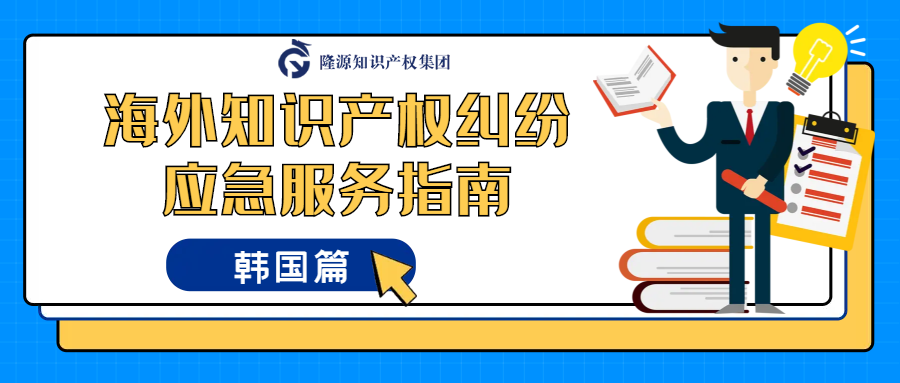The current intellectual property laws of South Korea include: Patent Law,
Utility Model Law, Design Law, Trademark Law, Copyright Law (including computer
program works), Semiconductor Integrated Circuit Layout Design Law, Law on
Preventing Unfair Competition and Protecting Trade Secrets, Seed Industry Law
and Customs Law.

The laws, regulations and relevant institutions of intellectual property in
South Korea include:
Korea Franchise Hall
The Korean Concession Office is the most important administrative agency in
the field of intellectual property in South Korea. Its main functions include:
the examination and registration of patents, utility models, designs and
trademarks, the formulation of policies to protect trade secrets, the
registration of layout designs for semiconductor integrated circuits, the
management of domestic and foreign intellectual property information and
documents, the publicity of intellectual property, the encouragement of creative
and innovative activities, international cooperation in the field of
intellectual property Human resources development in the field of intellectual
property.
Korean Copyright Commission
The Korean Copyright Commission is responsible for the specific
implementation of copyright (including computer software) registration and other
protection matters.
Korea National Seed Academy
The Korean National Seed Academy is responsible for the registration,
examination and protection of new plant varieties.
Charter Court and High Court
South Korea's court system involving intellectual property cases mainly has
two branches: the Chartered Court and the High Court.
If you are not satisfied with the trial results of the chartered court and
the high court, you can appeal to the big court, which will carry out the final
trial of the Supreme Court.
Response to intellectual property risk
Handling of warning letter
First, confirm whether the subject is qualified, whether the sender is the
patentee, exclusive licensee or its agent, whether the notification elements
meet the requirements, and whether the warning letter indicates the patent
number, infringing products and reasons for infringement.
Secondly, we need to know the patentee's demands, such as stopping
infringement, claiming compensation, and the time limit for replying to the
letter. Verify whether the patent rights written in the warning letter are
valid, and compare the infringing products and patent rights to confirm whether
the reasons for infringement in the letter are valid.
If the reasons put forward are valid, it is necessary to analyze the
compensation information in the letter, understand the attitude and intention of
the sender, and formulate corresponding coping strategies. If it is confirmed
that there is no infringement, the other party shall be informed of the fact
that there is no infringement, and a legal opinion on no infringement shall be
provided.
Handling after being sued
After being sued, the intellectual property rights of the products
suspected of infringement shall be investigated first.
Different from other countries, in principle, the Korean patent
invalidation strategy is not a defense to patent infringement litigation.
However, the validity of a patent can be challenged by a separate invalidation
procedure in a chartered court. If the court finds that the authorized patent
lacks novelty or creativity, the court can directly deny the exercise of the
patent right and reject the infringement lawsuit without ruling that the patent
right is invalid.
Non infringement defense includes providing written opinions issued by
agents with relevant technical background or experts in various fields, which
can strengthen the above argument. Therefore, before or after initiating an
infringement lawsuit, a trial to determine the scope of the claims can be filed
with a chartered court to determine whether the product or method belongs to the
scope of the patent. At the same time, the court can also be requested to
suspend the infringement proceedings until the special court makes a decision on
the scope of rights.
In order to take the initiative in the litigation, the original materials
such as manuals, electronic documents and internal emails related to the
products involved should be properly preserved. Keep evidence materials such as
lawyer's letters, exchanged mails and data messages.
The enterprise shall actively communicate with the other party or its
Chinese agents, distributors, affiliated companies and other institutions to
understand the starting point and purpose of the other party's behavior. It may
also consider introducing customers, relevant government departments, industry
associations, etc. for third-party mediation.
Once the litigation response is determined, the litigation response team
should be established as soon as possible, which should include Chinese lawyers,
Korean lawyers, enterprise decision makers, enterprise R&D personnel and
enterprise intellectual property legal personnel. The response team shall
cooperate closely and collect the following evidences comprehensively through
multiple channels: proof materials of intellectual property rights, relevant
product research and development records, materials proving that the source of
technical information related to relevant products is legal, intellectual
property analysis report issued by a third party, intellectual property rules
and regulations, etc.